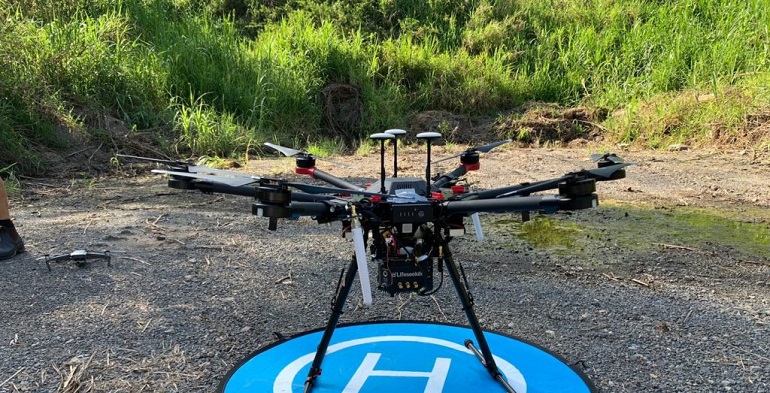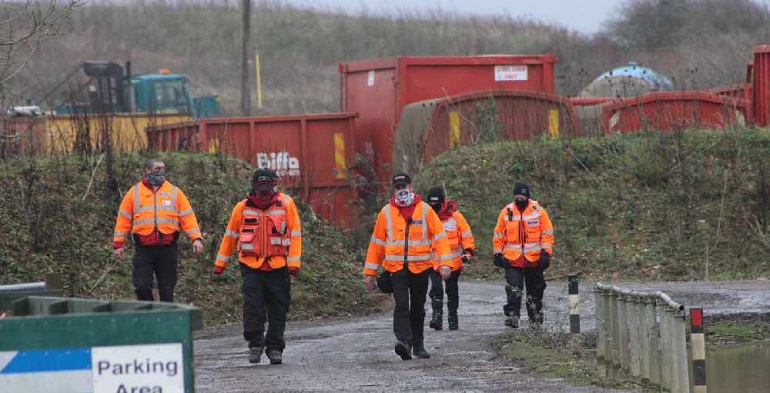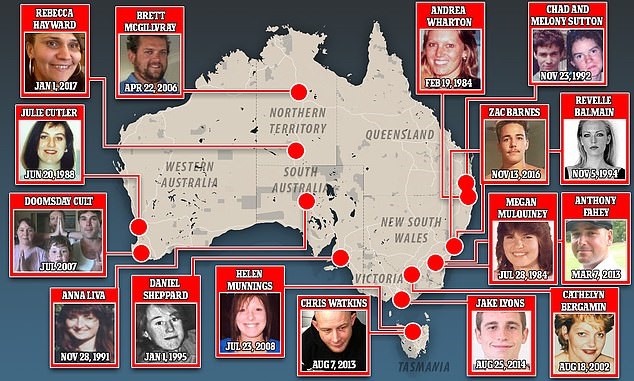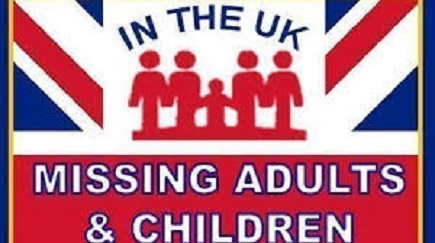Missing
Kristy Jean Rogers




Kristy, approximately 1997; Age when reported missing: 35 (approximately 2015)
Date and time person was reported missing : 08/02/1997
Missing location (approx) :
Crestview, Florida
Missing classification : Endangered Missing
Gender : Female
Ethnicity :
White
DOB : 08/23/1980 (40)
Age at the time of disappearance: 16 years old
Height / Weight : 5'3, 109 pounds
Description, clothing, jewerly and more : A dark-colored t-shirt and and white shorts, or a white cut-off t-shirt, blue jeans, a friendship necklace and several rings.
Medical conditions : Kristy was suffering from a kidney infection at the time of her disappearance and was supposed to be taking medication for it. She left her medicine behind.
Distinguishing characteristics, birthmarks, tattoos
: Caucasian female. Brown to sandy-blonde hair, blue eyes. Kristy has a lazy right eye. Her navel is pierced and she has pierced ears. Her wisdom teeth have been removed.
Information on the case from local sources, may or may not be correct : Kristy told her family she was spending the night of August 1, 1997 at a girlfriend's home in Crestview, Florida. She stayed at her boyfriend's instead. This was the first time she had spent the night with him.
Her boyfriend, Mack Cawthon, told authorities Kristy departed his house on north Lloyd Street at approximately 5:00 a.m. on August 2. He asked her to leave early so his grandparents, who lived next door, would not know she had stayed there. Cawthon's residence was located less than one mile from Kristy's family's Walnut Avenue house, about a fifteen-minute walk. She never arrived home and has never been heard from again.
In February 1998, six months after Kristy's disappearance, a bag containing clothing belonging to her was found in a wooded area behind the Crestview Plaza Shopping Center. The area had already been thoroughly searched by investigators and cadaver dogs; they believe, therefore, that the bag was left there after the search.
The contents included a shirt, shorties, underpants, a bra, socks, keys, and makeup, all belonging to Kristy. The bag was not hidden and the clothes inside appeared to be more weathered than the bag.
Unidentified female remains were located in a canal west of Boynton Beach, Florida in 1999, two years after Kristy vanished. Authorities incorrectly identified the body as Kristy in January 2001. Her loved ones finalized funeral arrangements by the time the mistake was corrected, but the burial had not taken place. Investigators initially believed that Kristy's dental records matched the victim. The error was reported less than one week after the incorrect identification was announced.
Police originally believed Kristy was a runaway, but later decided she met with foul play due to the long period of time that passed where she didn't contact anyone. At first they investigated her family, who have all since been ruled out as suspects. Cawthon has not been named as a suspect either, and investigators stated there were no inconsistencies in his story. They described his relationship with Kristy as "on-again, off-again." She was not having any problems at the time of her disappearance and she left behind all her belongings, including her kidney medication.
Authorities believe Kristy was abducted by someone she knew. Her mother describes her as a naive, trusting individual. Kristy's mother now lives in Alabama, but continues to hope for resolution in her daughter's disappearance. Her case remains unsolved.
Other information and links : ncy
Crestview Police Department
850-682-2055
September 2021 updates and sources
Missing Children�s Statistics
One Missing Child Is One Too Many
The lack of a common definition of �missing child,� and a common response to the issue, results in few reliable statistics on the scope of the problem around the world.
Even with this challenge, we know that:
In Australia, an estimated 20,000 children are reported missing every year.
Australian Federal Police, National Coordination Centre.
In Canada, an estimated 45,288 children are reported missing each year.
Government of Canada, Canada�s Missing � 2015 Fast Fact Sheet.
In Germany, an estimated 100,000 children are reported missing each year.
Initiative Vermisste Kinder.
In India, an estimated 96,000 children go missing each year.
Bachpan Bachao Andolan, Missing Children of India.
In Jamaica, an estimated 1,984 children were reporting missing in 2015.
Jamaica�s Office of Children�s Registry
In Russia, an estimated 45,000 children were reported missing in 2015.
Interview with Pavel Astakhov MIA �Russia Today�, Apr. 4, 2016.
In Spain, an estimated 20,000 children are reported missing every year.
Spain Joins EU Hotline for Missing Children, Sep. 22, 2010.
In the United Kingdom, an estimated 112,853 children are reported missing every year.
National Crime Agency, UK Missing Persons Bureau.
In the United States, an estimated 460,000 children are reported missing every year.
Federal Bureau of Investigation, Missing Children�s Statistics
One Missing Child Is One Too Many
The lack of a common definition of �missing child,� and a common response to the issue, results in few reliable statistics on the scope of the problem around the world.
Even with this challenge, we know that:
In Australia, an estimated 20,000 children are reported missing every year.
Australian Federal Police, National Coordination Centre.
In Canada, an estimated 45,288 children are reported missing each year.
Government of Canada, Canada�s Missing � 2015 Fast Fact Sheet.
In Germany, an estimated 100,000 children are reported missing each year.
Initiative Vermisste Kinder.
In India, an estimated 96,000 children go missing each year.
Bachpan Bachao Andolan, Missing Children of India.
In Jamaica, an estimated 1,984 children were reporting missing in 2015.
Jamaica�s Office of Children�s Registry
In Russia, an estimated 45,000 children were reported missing in 2015.
Interview with Pavel Astakhov MIA �Russia Today�, Apr. 4, 2016.
In Spain, an estimated 20,000 children are reported missing every year.
Spain Joins EU Hotline for Missing Children, Sep. 22, 2010.
In the United Kingdom, an estimated 112,853 children are reported missing every year.
National Crime Agency, UK Missing Persons Bureau.
In the United States, an estimated 460,000 children are reported missing every year.
Federal Bureau of Investigation, NCIC.
This, however, is only a snapshot of the problem. In many countries, statistics on missing children are not even available; and, unfortunately, even available statistics may be inaccurate due to: under-reporting/under-recognition; inflation; incorrect database entry of case information; and deletion of records once a case is closed.
The lack of numbers, and the discrepancy in the numbers that do exist, is one of the key reasons why ICMEC developed and advocates for the Model Missing Child Framework, which assists countries with building strong, well-rounded national responses, and facilitates more efficient investigations, management, and resolution of missing children cases.
We firmly believe that one missing child is one too many, and we are committed to improving the global understanding of and response to missing and abducted children.
Here is a look at missing children in the United States. There are several different types of missing children: runaways, family abductions, lost or �thrown away� and non-family abductions. Advances in technology, communications through public alerts and greater cooperation from law enforcement have facilitated the recovery process.
Statistics
According to the FBI�s National Crime Information Center (NCIC) Missing Person File, there are 89,637 active missing person records, of which juveniles under the age of 18 account for 30,396 (34%) of the records. (as of December 31, 2020)
AMBER Alert
�AMBER (America�s Missing: Broadcast Emergency Response) Alerts are emergency messages broadcast when a law enforcement agency determines that a child has been abducted and is in imminent danger. The broadcasts include information about the child and the abductor, including physical descriptions as well as information about the abductor�s vehicle - which could lead to the child�s recovery.�
The AMBER Alert system began in 1996 and was named in honor of Amber Hagerman, a 9-year-old who was abducted in Arlington, Texas, and murdered.
All 50 states, the District of Columbia, Puerto Rico, and the US Virgin Islands have AMBER Alert plans in place to help find missing children in danger.
As of December 2020, the AMBER Alert program has been credited with the safe recovery of 1029 children..
This, however, is only a snapshot of the problem. In many countries, statistics on missing children are not even available; and, unfortunately, even available statistics may be inaccurate due to: under-reporting/under-recognition; inflation; incorrect database entry of case information; and deletion of records once a case is closed.
The lack of numbers, and the discrepancy in the numbers that do exist, is one of the key reasons why ICMEC developed and advocates for the Model Missing Child Framework, which assists countries with building strong, well-rounded national responses, and facilitates more efficient investigations, management, and resolution of missing children cases.
We firmly believe that one missing child is one too many, and we are committed to improving the global understanding of and response to missing and abducted children.
Here is a look at missing children in the United States. There are several different types of missing children: runaways, family abductions, lost or �thrown away� and non-family abductions. Advances in technology, communications through public alerts and greater cooperation from law enforcement have facilitated the recovery process.
Statistics
According to the FBI�s National Crime Information Center (Missing Children�s Statistics
One Missing Child Is One Too Many
The lack of a common definition of �missing child,� and a common response to the issue, results in few reliable statistics on the scope of the problem around the world.
Even with this challenge, we know that:
In Australia, an estimated 20,000 children are reported missing every year.
Australian Federal Police, National Coordination Centre.
In Canada, an estimated 45,288 children are reported missing each year.
Government of Canada, Canada�s Missing � 2015 Fast Fact Sheet.
In Germany, an estimated 100,000 children are reported missing each year.
Initiative Vermisste Kinder.
In India, an estimated 96,000 children go missing each year.
Bachpan Bachao Andolan, Missing Children of India.
In Jamaica, an estimated 1,984 children were reporting missing in 2015.
Jamaica�s Office of Children�s Registry
In Russia, an estimated 45,000 children were reported missing in 2015.
Interview with Pavel Astakhov MIA �Russia Today�, Apr. 4, 2016.
In Spain, an estimated 20,000 children are reported missing every year.
Spain Joins EU Hotline for Missing Children, Sep. 22, 2010.
In the United Kingdom, an estimated 112,853 children are reported missing every year.
National Crime Agency, UK Missing Persons Bureau.
In the United States, an estimated 460,000 children are reported missing every year.
Federal Bureau of Investigation, NCIC.
This, however, is only a snapshot of the problem. In many countries, statistics on missing children are not even available; and, unfortunately, even available statistics may be inaccurate due to: under-reporting/under-recognition; inflation; incorrect database entry of case information; and deletion of records once a case is closed.
The lack of numbers, and the discrepancy in the numbers that do exist, is one of the key reasons why ICMEC developed and advocates for the Model Missing Child Framework, which assists countries with building strong, well-rounded national responses, and facilitates more efficient investigations, management, and resolution of missing children cases.
We firmly believe that one missing child is one too many, and we are committed to improving the global understanding of and response to missing and abducted children.
Here is a look at missing children in the United States. There are several different types of missing children: runaways, family abductions, lost or �thrown away� and non-family abductions. Advances in technology, communications through public alerts and greater cooperation from law enforcement have facilitated the recovery process.
Statistics
According to the FBI�s National Crime Information Center (NCIC) Missing Person File, there are 89,637 active missing person records, of which juveniles under the age of 18 account for 30,396 (34%) of the records. (as of December 31, 2020)
AMBER Alert
�AMBER (America�s Missing: Broadcast Emergency Response) Alerts are emergency messages broadcast when a law enforcement agency determines that a child has been abducted and is in imminent danger. The broadcasts include information about the child and the abductor, including physical descriptions as well as information about the abductor�s vehicle - which could lead to the child�s recovery.�
The AMBER Alert system began in 1996 and was named in honor of Amber Hagerman, a 9-year-old who was abducted in Arlington, Texas, and murdered.
All 50 states, the District of Columbia, Puerto Rico, and the US Virgin Islands have AMBER Alert plans in place to help find missing children in danger.
As of December 2020, the AMBER Alert program has been credited with the safe recovery of 1029 children.) Missing Person File, there are 89,637 active missing person records, of which juveniles under the age of 18 account for 30,396 (34%) of the records. (as of December 31, 2020)
AMBER Alert
�AMBER (America�s Missing: Broadcast Emergency Response) Alerts are emergency messages broadcast when a law enforcement agency determines that a child has been abducted and is in imminent danger. The broadcasts include information about the child and the abductor, including physical descriptions as well as information about the abductor�s vehicle - which could lead to the child�s recovery.�
The AMBER Alert system began in 1996 and was named in honor of Amber Hagerman, a 9-year-old who was abducted in Arlington, Texas, and murdered.
All 50 states, the District of Columbia, Puerto Rico, and the US Virgin Islands have AMBER Alert plans in place to help find missing children in danger.
As of December 2020, the AMBER Alert program has been credited with the safe recovery of 1029 children.
Child Protection Education of America
The Palm Beach Post
Northwest Florida Daily News
A missing person is a person who has disappeared and whose status as alive or dead cannot be confirmed as their location and condition are not known. A person may go missing through a voluntary disappearance, or else due to an accident, crime, death in a location where they cannot be found (such as at sea), or many other reasons. In most parts of the world, a missing person will usually be found quickly. While criminal abductions are some of the most widely reported missing person cases, these account for only 2�5% of missing children in Europe.
By contrast, some missing person cases remain unresolved for many years. Laws related to these cases are often complex since, in many jurisdictions, relatives and third parties may not deal with a person's assets until their death is considered proven by law and a formal death certificate issued. The situation, uncertainties, and lack of closure or a funeral resulting when a person goes missing may be extremely painful with long-lasting effects on family and friends.
Several organizations seek to connect, share best practices, and disseminate information and imAge at the time of disappearance: s of missing children to improve the effectiveness of missing children investigations, including the International Commission on Missing Persons, the International Centre for Missing & Exploited Children (ICMEC), as well as national organizations, including the National Center for Missing & Exploited Children in the US, Missing People in the UK, Child Focus in Belgium, and The Smile of the Child in Greece.
The Tampa Bay Times
Interactive Missing Person Search Map




























